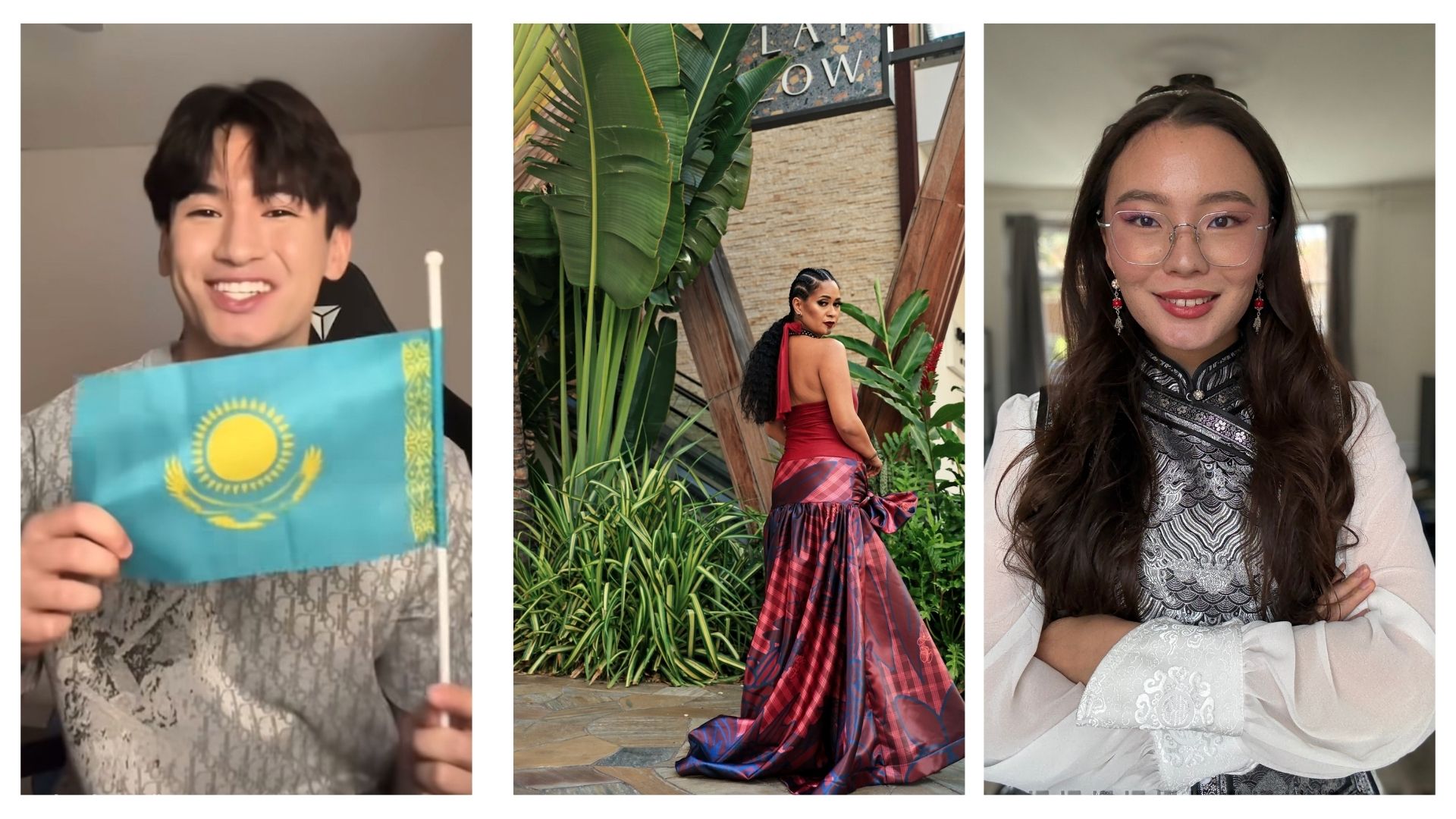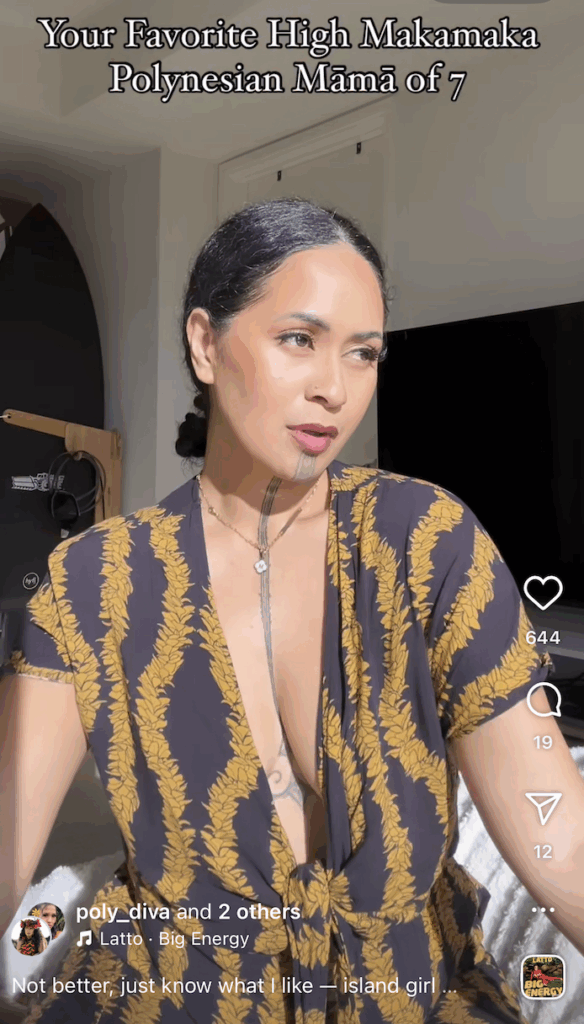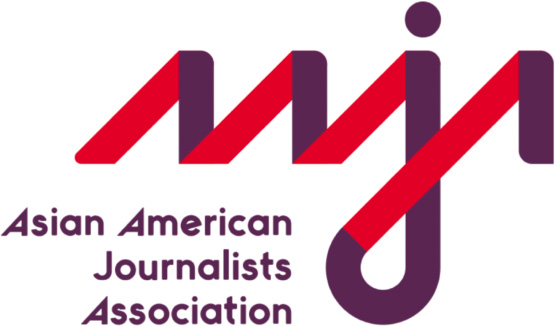Media coverage
 Content creators are redefining “Asian American and Pacific Islander” and who counts as part of the global diaspora.
Content creators are redefining “Asian American and Pacific Islander” and who counts as part of the global diaspora.
Published August 16, 2025
 Madison Yue
Madison Yue

Sayat Nokerban, Kuʻuleilehua Makekau, and Chimita Sharapova are influencers redefining what it means to be AAPI on social media.
The Asian American and Pacific Islander identity has never been one-size-fits-all. Creators like Kuʻuleilehua Makekau and Sayat Nokerban are redefining what it means to be Asian American, Native Hawaiian, and Pacific Islander (AANHPI) for the next generation. And across the globe, Chimita Sharapova is leading a similar fight to redefine what it means to be Asian inside Russia. Their videos are exploding, collecting millions of views while also helping people from those communities finally feel ‘seen.’
The AAPI community is the fastest-growing racial group in the United States, totaling over 24 million people as of 2023, according to the Pew Research Center. Yet within this broad category, many groups remain overlooked. Native Hawaiians number 680,442 people nationwide, making up less than 3% of the total AANHPI population, according to the 2020 U.S. Census. Central Asians face even greater invisibility. An exact population count is difficult to determine, as Central Asians are often categorized as ‘Other Asian’ in Census data. These gaps in disaggregated data are exactly what drive creators like Makekau and Nokerban toward education and awareness of their communities.
For creators like Makekau, visibility starts with an identity that is worn, lived, and passed down. For this 36-year-old mother of 7, her kākau, that extends from her lip down to her chest, is more than a permanent tattoo: it represents a living promise to speak the truth, to carry the voices of her kupuna (ancestors), and a commitment to Kānaka Maoli (Native Hawaiians).

“It is a reminder to me every time I look in the mirror or every time I see it … of who I am, why I use my voice and what it’s there for,” Makekau said.
Makekau, known as @poly_diva on Instagram or @thepoly_diva on TikTok, started her account in 2012, like many young moms, posting ultrasounds and babies’ first steps. The turning point in her account came on July 4, 2020, with a viral video explaining how Hawai‘i was illegally annexed by the United States in 1898. The clip quickly amassed 50,000 views in 24 hours. Since then, her platform has grown into a community of over 119,000 followers.
“Everything that I do has to represent my community and my people because when one of us win[s], all of us do,” Makekau said.
Nokerban, known as @sayatnokerban on Instagram, is an 18-year-old content creator who shares the same mission of wanting to rewrite cultural narrative.
“I’m convinced people don’t know Central Asians exist,” Nokerban said in his first viral video.
“Growing up, I always knew I was different,” he said. “Whenever I met other Asian people, they’d ask if I was Chinese or Japanese. I’d say, ‘I’m Kazakh,’ and they’d respond, ‘What’s Kazakhstan?’”
That simple question stuck with Nokerban and motivated a shift in his content. What began as an account filled with singing and dancing videos soon evolved into a platform highlighting his Kazakh identity. His most viral video opens with the statement: “I’m convinced people don’t know Central Asians exist.” His account grew to over 140,000 followers within two and a half months, netting 90 million views and counting.
“Anybody can make music, anybody can dance,” Nokerban said. “But not everybody can be Kazakh.”
While Makekau and Nokerban navigate American culture and the aggregate AANHPI identity, Sharapova represents a different, but parallel, struggle: the invisibility of Asian peoples in her home country of Russia. Like her American counterpart creators, she grappled with questions about identity, and often had to explain her Buryat-Mongol background. Known as @chimka_travels on Instagram, the 23-year-old carried that same frustration of a lack of knowledge and erasure of her people, actually finding inspiration in Nokerban’s video. Her own viral video, now at 4.1 million views, opened with a similar line: “I’m convinced people don’t know Asian Russians exist.”
“I’m getting goosebumps since I love telling this story so much,” Sharapova said, smiling. “I feel this spark firing in me that I need to share this with the people.” This newfound calling has driven her to educate global audiences about her Buryat-Mongol heritage through videos that showcase her traditional clothing and forgotten histories.
What unites these three content creators is a shared mission that is fueled by frustration and passion to raise awareness about their respective cultures and reclaim space in the dominant American and global diaspora narratives, shaped through immigration, colonization, and geopolitical borders.
“There’s a big lack of knowledge online,” Nokerban says. “I want people to scroll through my page and feel like they’ve learned something.”
However, this drive to inform borne out of a commitment to their communities also comes with challenges.
For Nokerban, who gained 80,000 followers in the span of two months, he feels the pressure to churn out monetizable content on a daily basis.
“I’m fueled by fear that I’m not going to be as successful as I want to be,” he admits. “Every single day I think about it— if I don’t post today, what’s going to happen to me?”
Sharapova gained a total of 89,000 followers seemingly overnight and was invited to the Economic Forum in Mongolia by Ganhuyag Chuluun Hutagt, its former vice minister of finance. The two-day event brought together over 1,200 government officials and representatives from international organizations. In addition to back-to-back networking sessions and formal dinners, she was asked to give an impromptu presentation to over 2,000 youth attendees. The whirlwind of sudden fame overwhelmed Sharapova, eventually pushing her to a breaking point after the trip.
“I came back home and I just burst out all my emotions,” she said. “I cried for four hours.”
Sharapova, who lives in the Netherlands but holds Russian citizenship, must navigate avoiding political sensitivities that could put her at risk, such as addressing the Russia-Ukraine War.
“I really watch my mouth, every word,” she explains. “If I wouldn’t have this Russian passport and connection with Russia, I would have so much more interesting content.”
Perhaps most painful is criticism from within their own communities. Makekau said she has been called a “plastic Hollywood Hawaiian” by fellow Hawaiians who questioned her authenticity. Despite the harsh comments and backlash, she has continued her content work.
“I thought, ‘what is the most classic Hawaiian thing I could do?’ Ah, I’ll enter a beauty pageant. And I won,” she said, laughing.
Makekau was crowned 2025 Miss Bikini Hawai‘i, making history as its first winner with facial tattoos. She continues to champion Indigenous representation.
Nokerban balances the negativity through a support network with other young Asian entrepreneurs who regularly connect to share goals and reflect on their experiences as creators.
These creators define success beyond follower counts or viral views. For Makekau and her husband, it means helping Native Hawaiian families return home from the diaspora, as Native Hawaiians make up a small percentage of Hawai‘i’s population. They plan to use the income generated from their 25-acre farm to purchase additional properties and teach sustainability practices. Nokerban hopes to become the first popular Central Asian American artist. Shaprova dreams of seeing the Buryat-Mongol culture fully recognized as both unique and modern.
“And maybe next time someone asks me where I’m from, they won’t say, ‘But why are you Asian if you’re from Russia?’ because the world will finally understand how many ethnic groups make up Russia, and how beautiful that diversity is,” Sharapova said.
As these creators continue to navigate the complexities of representation and balancing content creation with cultural authenticity, they are creating more than content. They are creating space for others like them to exist, be seen, and tell their own stories. In pushing beyond the boundaries of what AANHPI means, they remind us that every view, follow, and share carries the weight of histories and culture with the world.
Correction: A previous headline described individuals featured in the article as part of the Asian diaspora. This headline has been updated to clarify that not all individuals are part of the Asian diaspora.

Washington University (St. Louis)
Media coverage
Seattle 2025





Apply
Become a fellow or editor
Donate
Support our impact
Partner
Work with us as a brand

The Asian American Journalists Association (AAJA) is a membership nonprofit advancing diversity in newsrooms and ensuring fair and accurate coverage of communities of color. AAJA has more than 1,500 members across the United States and Asia.